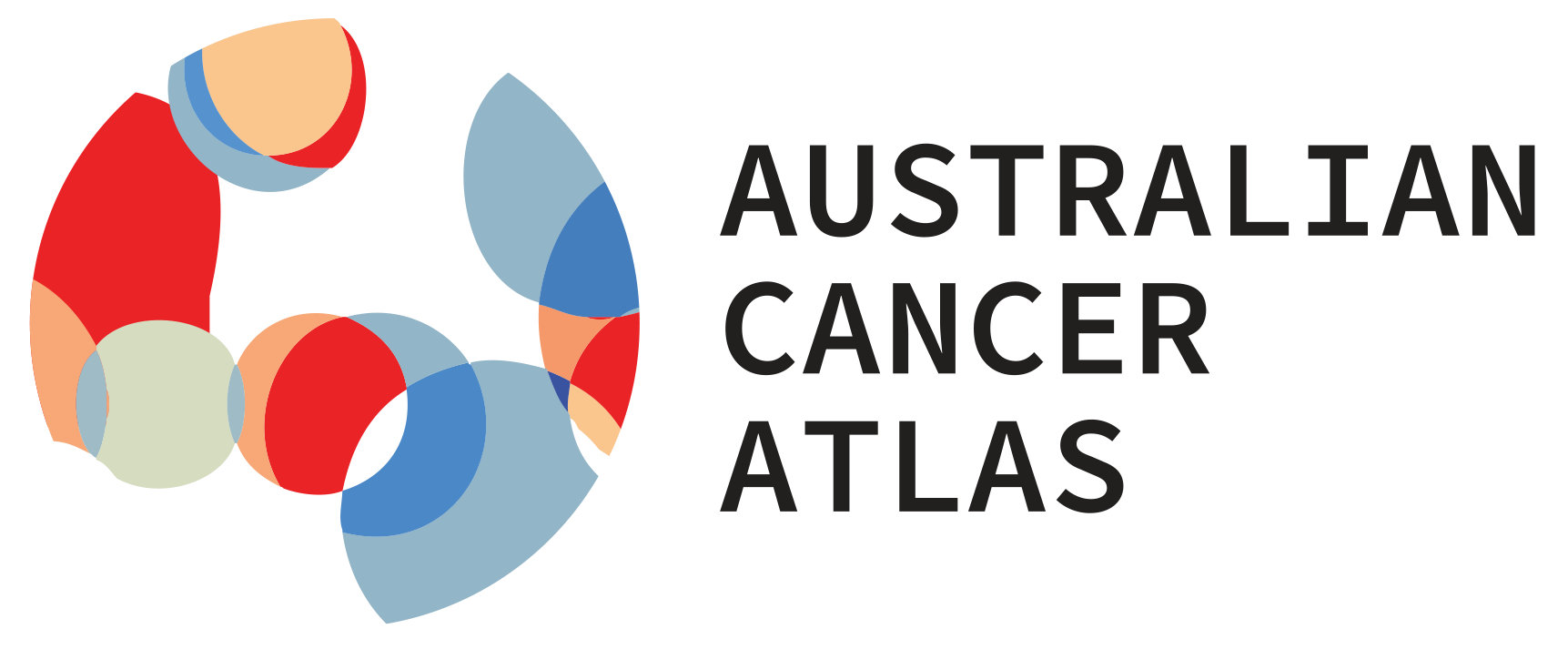
4 Geographical areas
All information about geographical areas for the Atlas were sourced from the Australian Bureau of Statistics. The Australian Cancer Atlas divides the country into specific areas using Statistical Area 2 (SA2), a component of the Australian Statistical Geography Standard (ASGS), (Australian Bureau of Statistics, 2016a) a geographical classification system developed by the Australian Bureau of Statistics.
4.1 Statistical Area Level 2 (SA2)
Statistical Areas Level 2 (SA2) (Australian Bureau of Statistics, 2016a) are the smallest areas that have annual (yearly) estimated resident population data readily available. The Australian Bureau of Statistics defines their purpose as “representing a community that interacts together socially and economically”.
The Atlas uses the ASGS July 2016 edition for SA2 boundaries. (Australian Bureau of Statistics, 2016a) There were 2,310 SA2s (2016) defined for Australia, but some of these (n=18) were undefined categories which had no location. This left 2,292 SA2s representing physical geographical areas. Of these, the very remote islands of Christmas Island, Cocos Island, Lord Howe Island and Norfolk Island were excluded from the analyses. Therefore 2,288 SA2s were potentially eligible for analysis. However, in practice SA2s that had low populations (zero or less than 5) on average during the study period were excluded from the modelling. The number of such excluded SA2s varied with the eligible population for the reported indicator.
When using the Australian Cancer Atlas, you can look at specific areas by entering the suburb or postcode. The map then displays the boundaries of the corresponding SA2. However, keep in mind that even though you can explore the map using suburbs or postcodes, there are not any statistics available for individual suburbs or postcodes.
The SA2 geographical areas can be used as building blocks to form larger geographical regions. The larger regions used in the Australian Cancer Atlas include states and territories, greater capital city regions, remoteness categories, and categories of area-level socioeconomic status. Rather than providing one summary estimate for these broader regions, the Atlas reports on the range of SA2-specific estimates within each broad region.
4.2 States and territories
There are eight Australian states and territories: New South Wales, Victoria, Queensland, South Australia, Western Australia, Tasmania, Northern Territory and Australian Capital Territory. For the purposes of Atlas 2.0, Jervis Bay is considered to be part of New South Wales.
4.3 Greater capital city regions
The greater capital city regions (GCCSA) are geographical areas designed to represent the functional extent of each of the eight State and Territory capital cities. (Australian Bureau of Statistics, 2016a) They comprise Greater Sydney, Melbourne, Brisbane, Adelaide, Perth, Hobart, Darwin, and Australian Capital Territory. The geographical boundaries of these areas are defined by the Australian Bureau of Statistics. (Australian Bureau of Statistics, 2016a)
4.4 Remoteness
The Australian Bureau of Statistics produce Remoteness Areas, which divide small areas in Australia into five categories of remoteness (Major city, Inner regional, Outer regional, Remote and Very remote) based on their relative access to services. (Australian Bureau of Statistics, 2018a) These remoteness areas are measured using the Accessibility and Remoteness Index of Australia (ARIA+) produced by the University of Adelaide. The Remoteness areas are a purely geographic measure of remoteness and considers services within the specific area and the distances to localities with more comprehensive services. These measures were originally defined at the smaller Statistical Area Level 1 (SA1) level, and then defined for the larger SA2 regions using population proportions.
4.5 Socioeconomic groupings
The area-based socioeconomic groupings were categorised using the 2016 census-based Socioeconomic Indexes for Areas (SEIFA), which have been developed by the Australian Bureau of Statistics. (Australian Bureau of Statistics, 2018b) Note that these indices reflect the average characteristics of people living in a specific area, so may not reflect the socioeconomic status of all individuals living in that area.
There are five different SEIFA measures; with the Index of Relative Socio-economic Advantage and Disadvantage (IRSAD) being used for the Atlas. The IRSAD summarises information about the economic and social conditions of people and households within an area, including details about household income, education levels, occupation categories and car ownership. (Australian Bureau of Statistics, 2018b)
Each SA2 is allocated an IRSAD score, and then ranked from highest to lowest across Australia. These ranked SA2s are then grouped into five groups (called quintiles), weighted by the population so that about 20% of the population are in each IRSAD quintile. The five quintiles are labelled most advantaged, advantaged, middle, disadvantaged and most disadvantaged.